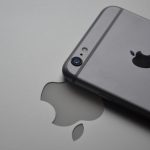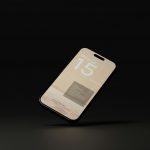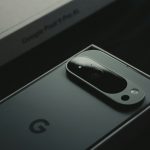The iPhone 13 is currently the best-selling model in Apple’s 13 series, but how does it truly stand out from its predecessor, the iPhone 12? At first glance, the two models appear nearly identical, with one of the few noticeable changes being the updated camera layout on the back. However, Apple’s latest model does come with several key upgrades under the hood, including better battery life, improved cameras, faster performance, and a few other surprises—although one highly anticipated feature didn’t make the cut: the 120Hz ProMotion display.
So, what are the main differences between the iPhone 13 and the iPhone 12? Is it worth spending extra for the newer model, or is the slightly cheaper iPhone 12 still a viable option? Let’s take a closer look.
Quick Comparison: iPhone 13 vs iPhone 12
Similar design and size, although the iPhone 13 is slightly heavier.
Both feature a 6.1-inch display, but only 60Hz refresh rates.
The iPhone 13 has a brighter screen.
The iPhone 13 is powered by the A15 Bionic chip, while the iPhone 12 uses the A14.
Upgraded dual cameras with larger sensors on the iPhone 13.
The iPhone 13 offers longer battery life.
Base storage starts at 128GB on the iPhone 13, double that of the iPhone 12.
Both models have the same charging speeds.
iPhone 13: Pros and Cons
Pros:
Significantly improved battery life compared to the iPhone 12.
Enhanced photography capabilities in challenging conditions, with more dynamic and vibrant images.
Brighter, perfectly calibrated display that performs well outdoors.
The addition of a Cinematic video mode.
Base storage is doubled to 128GB at the same price point as the iPhone 12.
Cons:
The display’s 60Hz refresh rate feels outdated for a phone in this price range.
Both wired and wireless charging are slower compared to some competitors.
Cinematic mode can be tricky to use without optimal lighting.
The slightly taller notch intrudes on some video formats.
iPhone 12: Pros and Cons
Pros:
OLED display was a major improvement over earlier models.
The introduction of MagSafe, a magnetic accessory and charging system with potential for future innovations.
Excellent performance, thanks to the A14 Bionic chip.
Still one of the best smartphone cameras on the market.
Cons:
64GB of base storage feels limited, especially given today’s app and content demands.
Lacks a telephoto lens.
No high refresh rate, which has become a popular feature in modern smartphones.
Design and Display Comparison
When it comes to design, the iPhone 13 and iPhone 12 are nearly identical. Both devices feature a 6.1-inch flat display, which has become the perfect middle ground for many users—larger than the previous 5.8-inch screens seen on models like the iPhone X, XS, and 11 Pro. However, the iPhone 13 does have a slightly heavier build, though it’s not something most users would notice without comparing the two side by side.
Both phones share a 60Hz refresh rate, which, while still functional, falls short when compared to the smoother experience offered by higher refresh rate displays, such as the 120Hz ProMotion technology found on the iPhone 13 Pro. In terms of display quality, the two models are quite similar, with identical sizes and resolutions. However, one key improvement on the iPhone 13 is its brighter screen, which reaches a peak brightness of 800 nits, compared to 625 nits on the iPhone 12. This makes the iPhone 13 noticeably easier to use in bright outdoor settings.
Apple has also made the notch slightly smaller—about 20%—on the iPhone 13, though this change doesn’t dramatically impact the user experience, as Apple hasn’t made much use of the freed-up space.
Performance and Battery Life
Under the hood, the iPhone 13 is powered by Apple’s A15 Bionic chip, a step up from the A14 chip found in the iPhone 12. This translates to faster performance, more efficiency, and improved handling of demanding tasks, such as gaming and multitasking. Although the average user might not notice a massive difference in day-to-day use, the A15 chip ensures the iPhone 13 will stay ahead in terms of future-proofing.
One of the most significant upgrades in the iPhone 13 is its battery life. Thanks to more efficient power management, the iPhone 13 can last much longer on a single charge than the iPhone 12, making it an ideal choice for those who need their phone to get through a full day of heavy use.
Camera Upgrades
The camera system is where the iPhone 13 truly shines over its predecessor. Both models feature dual cameras (wide and ultrawide lenses), but the iPhone 13 comes with larger sensors, allowing for better low-light performance and sharper, more vibrant photos. The improved image quality is particularly noticeable in challenging conditions, such as dim lighting or high-contrast scenes.
Apple has also introduced a new Cinematic video mode in the iPhone 13, which adds a professional touch to videos by automatically adjusting focus and depth of field while recording. While this feature is a fun addition, it requires good lighting to work effectively, and some users may find it a bit finicky to use in everyday situations.
Storage and Pricing
One of the standout improvements in the iPhone 13 is the base storage. While the iPhone 12 starts at 64GB, the iPhone 13 doubles that to 128GB, providing more room for apps, photos, and videos. Despite this increase, Apple has kept the pricing for the iPhone 13 the same as the iPhone 12, making it a better value for those who need more storage without having to pay extra
 Google Set to Launch a Pinterest Rival: Major Announcement Expected at Google I/O 2025
Google Set to Launch a Pinterest Rival: Major Announcement Expected at Google I/O 2025  iPhone SE vs iPhone 13 Mini: A Compact Phone Showdown
iPhone SE vs iPhone 13 Mini: A Compact Phone Showdown  Mario Kart World Ushers in a New Era with Open-World Racing
Mario Kart World Ushers in a New Era with Open-World Racing  Why Some of the World’s Richest Prefer Android Over iPhones
Why Some of the World’s Richest Prefer Android Over iPhones  Eufymake Unveils UV Printer That Brings 3D Textures to Almost Any Surface
Eufymake Unveils UV Printer That Brings 3D Textures to Almost Any Surface  Google Pixel 8 vs Pixel 7: Genuine Progress or Just More of the Same?
Google Pixel 8 vs Pixel 7: Genuine Progress or Just More of the Same?  NVIDIA Blames Users, AIB Partners, and Third-party Cable Makers for RTX 40 and RTX 50 GPU Burnouts
NVIDIA Blames Users, AIB Partners, and Third-party Cable Makers for RTX 40 and RTX 50 GPU Burnouts  NeuroSense Therapeutics: A Promising Biotech Stock in the Neurodegenerative Space
NeuroSense Therapeutics: A Promising Biotech Stock in the Neurodegenerative Space  Critical LDAP Vulnerability Puts Windows Systems at Risk
Critical LDAP Vulnerability Puts Windows Systems at Risk 